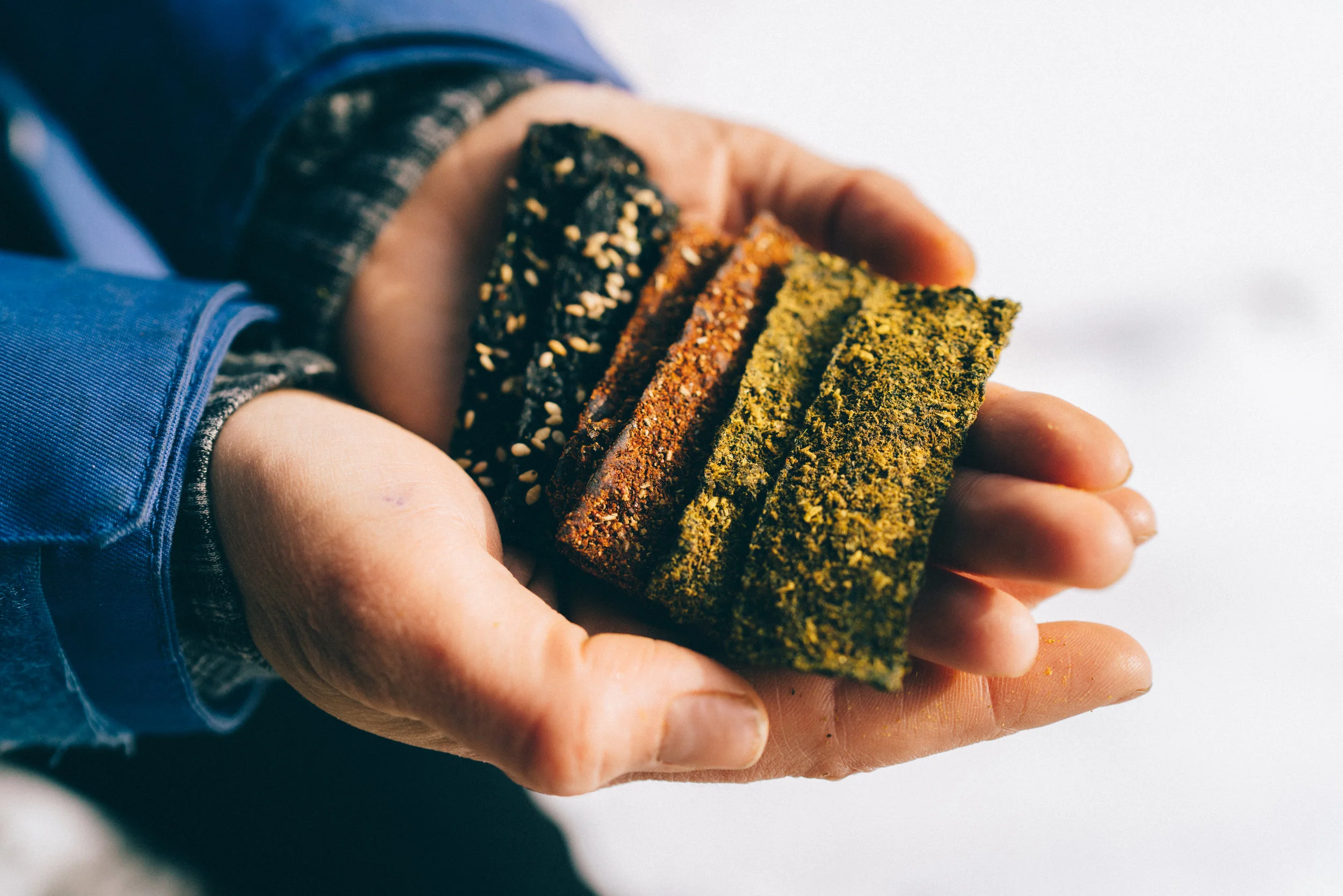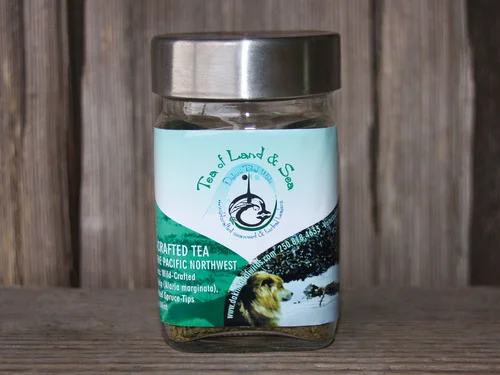Going Beyond the Roll with Exciting Ways to Eat Seaweed
by
Mary Allen
Wonder Weed
If a weed is a plant whose virtues have not yet been discovered, then seaweed is ready for rebranding. This food source, underutilized in the Western world, is rich in vitamins and minerals such as iron and iodine. To cultivate, seaweed requires no fresh water, no land, no chemical inputs, and no fertilizers, and it creates no nitrogen runoff. Furthermore, sea vegetables sequester carbon as they grow, helping to combat the effects of global warming and mitigate ocean acidification. When it comes to feeding a global population of 9.7 billion people in 2050, seaweed could play a large role in finding sustainable solutions.
The world bank suggests that seaweed aquaculture could provide “food security, income generation, and environmental health in tropical developing countries.” Of course, these benefits hinge on regenerative aquaculture practices. Sustainable cultivation would avoid the pitfalls of conventional agriculture such as the introduction of foreign species, monocropping, and over-cultivation. Through responsible farming practices, seaweed could help revolutionize our food system.
Going Mainstream
Seaweed has historically been a central component of Asian cuisines, but it is increasingly gaining commercial traction and media attention in American, Canadian, and European markets. Brands and celebrity chefs, like Jamie Oliver, are mainstreaming the traditional use of seaweed fronds in the British Isles and catching the wave of seaweed-enthusiasm. (Exhibit A: Jameson recently launched Wild Seaweed Bitters.)
A report released this past February by Global Market Insights projects that the global commercial seaweed market will surpass 87 billion dollars by 2024, up from 42 billion in 2016. An increasingly health-conscious and veg-forward consumer base is powering this trend, and hydrophilic entrepreneurs and companies are leading the way. These businesses are innovating what seaweed can look—and taste—like when it’s not wrapped around a piece of sushi.

1. Kelp Salsa
In Southwestern Alaska, Matt Kern and Lia Heifetz are turning locally foraged bull kelp into salsa. Their company, Barnacle Foods, is based in Juneau where they are at the forefront of an entrepreneurial groundswell to bring Alaska’s seaweed to a wider market. Kelp salsa is a local delicacy they’ve been making for years, and with three flavors commercially available—Sea Verde, Campfire, and Original—they're now exporting this kelp salsa to the rest of the United States. And they don't stop there: Barnacle Foods also makes kelp pickles! In Matt’s words, “We are working hard to bring seaweed to people in new and delicious ways, and are very excited about the potential of this amazing food!”

Image by Marshall Birnbaum | Courtesy of Akua
2. Seaweed Jerky
Akua is hoping to capitalize on the jerky-craze while steering consumers towards a more sustainable, nourishing sea veg snack. This startup clinched the 2017 FoodBytes! Judges’ Choice Award for “scalability, innovation, traction and social impact,” and they’ve become a media darling with endorsements from Sir Richard Branson, Fast Company, and Edible Manhattan. Their plant-based jerky is made from sugar kelp, shiitake and crimini mushroom stems, and pea protein, and the three initial flavors are Rosemary Barbecue, Spiced Turmeric, and Sea Salt and Sesame. With an ongoing crowdfunding push, their seaweed jerky will be coming to market later in 2018.

3. Kombu Burger
With a wink to its home city of Amsterdam, the Dutch Weed Burger brings a new meaning to “seafood” with this fish-free, kombu-based vegan patty and chlorella-enriched bun. The Dutch burger joint grew out of a documentary project to find the best seaweed recipe by founders Lisette Kreischer and Mark Kulsdom. In addition to their iconic burger—which they supply to restaurants around the region—the Dutch Weed Burger also sells an eye-catching seaweed bagel and Weed Bites (i.e., deep-fried bean and algae bites) which they also fondly refer to as Wish n’ Chips.

4. Sea Spaghetti
Sea Spaghetti is a brown alga found in the North East Atlantic and the North Sea. Its high nutrient content and long, branching shoots have made it a go-to alternative for gluten-wary pasta lovers. The Cornish Sea Company sells fresh and dried sea spaghetti, hand-harvested from the waters surrounding the British Isles, in their lineup of kelp, dulse, sea greens, and other seaweed products. They also freely offer cooking guides, videos, and recipes ranging from seaweed pesto to carrot and sea spaghetti salad. With a central focus on sustainability, they’ve established a code of conduct for seaweed foraging, which includes harvesting only during the active growth season, rotating harvest locations, and harvesting only specific parts of the plants.


5. Seaweed Tea
Rainbow seaweed with stinging nettle and wild-crafted winged kelp with spruce tips and mint make for some delicious, steaming cups of herbal tea from Dakini Tidal Wilds. Founder Amanda Swinimer is a marine biologist who has been hand-harvesting Canadian seaweed off the coast of British Columbia for 17 years. She supplies seaweed to local chefs and sells her artisanal teas, salves, and dried seaweed online. She also offers workshops and snorkeling tours of the waters around Sooke for all those interested in better understanding the world of wild seaweed.

6. Seaweed Chocolate
Yes, seaweed has earned a spot in the dessert line up too. Ocean’s Halo is leveraging the versatility of seaweed’s rich umami flavor for their salty-sweet sea treats: Almond Chocolate Seaweed Strips and Coconut Chocolate Seaweed Strips. Why shouldn’t dessert be decadent, nutritious, and eco-friendly? Ocean's Halo is the collaboration of four mission-minded dads who wanted to make a snack food that was simultaneously delicious, healthy, and good for the planet. Seaweed was the answer. In founder Mike Shim’s words, "Seaweed is a truly miracle superfood. It requires no fertilizer, no soil, no pesticides, no weeding and no watering. And because it grows remarkably quickly—up to 6 inches a day—it's a great source of long-term, sustainable food supply." Talk about a guilt-free dessert!
As we explore ways to feed a growing population while combating climate change, it’s clear that seaweed should be on the table. In the short term, one of the greatest challenges may be getting consumers expand their notion of how seaweed can be eaten and generating adequate demand in Western markets. But through culinary inspiration and marketing know-how, these entrepreneurs are turning the tide. From the appetizer to the digestif, there’s no course seaweed can’t tango with.


